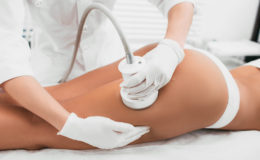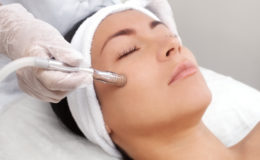Hyperpigmentation affects millions of people worldwide. For many, this can be embarrassing and can affect their self-esteem. Fortunately, you can consider chemical peels to achieve younger, healthier skin. In this comprehensive guide, you will learn important facts about chemical peels, how they can be used to treat hyperpigmentation, the available types, and the possible side effects. This lets you decide if it’s the right treatment for your skin.
What Is Hyperpigmentation?
Hyperpigmentation or melasma is a common skin condition wherein the body produces too much melanin, making the skin dark or discolored. Sun exposure, genetics, hormones, and certain medications can cause this. It is most commonly seen on areas exposed to the sun, like the face, neck, chest, back, and hands.
What Are Chemical Peels?
Chemical peels are cosmetic procedures where a dermatologist or other qualified skin professional applies a chemical solution to the skin, such as glycolic acid or trichloroacetic acid, resulting in exfoliation. The procedure helps remove the outermost layer of dead skin cells and reduces the following:
- Uneven skin tone
- Age spots
- Fine lines and wrinkles
- Acne scars
- Hyperpigmentation
- Sun-damaged skin
Aside from reducing hyperpigmentation, chemical peels also help stimulate collagen production for improved elasticity and firmness, even out skin tone and texture, refine pores, reduce wrinkles, and refresh the overall complexion. Depending on the peel type used and its strength, it can be mild enough to cause only slight peeling or strong enough to penetrate deeper layers of skin.
The procedure usually lasts 90 minutes for a full-facial procedure, but it may take shorter or longer depending on the type of peel used and the body part being treated.
Three Depths of Chemical Peels
Depth is the intensity of the peel, which includes:
-
Superficial chemical peels
A superficial or light peel is best for treating mild hyperpigmentation, sun damage, or age spots. It uses a mild acid solution that exfoliates the skin’s outermost layer.
-
Medium chemical peels
Medium chemical peels penetrate deeper into the skin than superficial ones and can treat more severe hyperpigmentation. Medium peels use a stronger acid solution and may require anesthesia and a pain reliever. These types are also usually used as chemical peels for age spots, acne scarring, and fine to moderate wrinkles.
-
Deep chemical peels
A deep peel is the strongest chemical peel and can be used to treat severe wrinkles, sun damage, or hyperpigmentation that has been present for many years. You may need local anesthetics, sedatives, and pain medications for this peel. Also, this usually involves pretreatment for up to eight weeks before the procedure.
What Are the Best Types of Chemical Peels for Hyperpigmentation?
Below are a few of the common types of melasma chemical peels you can consider:
1. Alpha Hydroxy Peels (AHA Peel)
These are mild peels composed of lactic, fruit, and glycolic acid. They are often used as a chemical peel for sun spots, age spots, freckles, and other discoloration. It is also helpful in stabilizing oily or acne-prone skin.
This is an ideal treatment if you are busy and can’t take time off for extended healing. Alpha hydroxy acid peels don’t typically cause significant redness or stinging and can be done in as little as 30 minutes. But since they are mild treatments, you may need a series of sessions to achieve your desired results.
In addition, this can be excellent to use as a chemical peel on the inner thighs. Though dark inner thighs are common and not harmful to your health, you can treat them with a light alpha
hydroxy acid peel to reduce the appearance of dark spots. Medium and deep chemical peels can irritate the delicate skin on the inner thighs and should be avoided.
-
Beta Hydroxy Peels
These peels contain beta hydroxy acids, including salicylic acid, a stronger and more aggressive peel than the AHA peels. It can be used on any skin type and is usually used to treat hyperpigmentation, wrinkles, and acne breakouts caused by excess oil production in the face and body.
However, these peels should be administered to those with dark complexions as the ingredients used can cause further hyperpigmentation of darker skin tones. Also, you may need six sessions before achieving the desired clinical effect, usually at 2 to 4 weeks intervals.
-
Jessner Peels
A Jessner peel for hyperpigmentation is a combination of salicylic acid, lactic acid, and resorcinol, which helps exfoliate the top layer of your skin. It is effective against acne, sun damage, wrinkles, and hyperpigmentation and can help reduce the appearance of scars. Like other chemical peels, it breaks down the skin’s surface, regenerating new cells.
Jessner peels are often used with caution for those with darker skin tones due to the potential risk of hyperpigmentation. Make sure to consult an experienced dermatologist who will take all the necessary precautions to protect your skin.
Similarly, if you have a sensitive or extremely fair skin type, talk to your doctor about getting this chemical peel, as it may be too aggressive to your skin.
-
TCA Peels
Trichloroacetic acid (TCA) is a powerful peel that works as an exfoliator and can dramatically improve texture and pigment discoloration. It is generally used on more severe cases of hyperpigmentation and can help reduce the appearance of blemishes, scars, wrinkles, and sun damage.
However, your dermatologist may use a lower concentration of 25% if you have darker skin to test your sensitivity.
How Long Do Chemical Peels Last?
The results of chemical peels vary depending on the type of peel used and how severe your condition is. For example, a chemical peel for lip pigmentation may last up to one to two months, while a chemical peel for your face may last up to six months. Generally, your results can last anywhere from one to twelve months.
It’s important to remember that every individual is different, so results may differ. Also, you should combine peels with other treatments like black jelly pigment treatment and a good skincare routine for maximum results and longevity. Speak with your doctor about how long the effects of your peel will last before and after the procedure.
Are There Any Risks of Chemical Peels for Melasma?
A chemical peel can cause side effects, such as:
-
Redness, swelling, and scabbing
It’s normal to experience these side effects for a few days after the procedure, but redness may last for a few months after a medium or deep chemical peel.
-
Scarring
Though it’s uncommon, some patients may experience scarring for a few days, usually on the lower part of the face. Your dermatologist may prescribe antibiotics and steroid medications to soften the appearance of these scars.
-
Skin color changes
Some people may experience light (hyperpigmentation) or dark (hyperpigmentation) patches on the skin after a chemical peel. These changes are temporary and typically go away within weeks or months. These issues are often seen in patients with brown or black skin, which can sometimes be permanent.
-
Infection
All types of chemical peels can trigger a herpes viral infection, the virus causing cold sores in those predisposed to it. Your dermatologist may prescribe an antiviral medication before the procedure to reduce the risk of infection. Sometimes, medium and deep chemical peel can also lead to bacterial or fungal infection.
-
Heart, liver, or kidney damage
While it’s rare, this is often caused by deep chemical peel because it uses carbolic acid, which can damage your heart’s muscles and the kidneys and liver.
What Is an Enzyme Peel for Hyperpigmentation?
An enzyme peel is a mild exfoliation using natural enzymes from fruits and plants to gently remove the top layer of skin cells. This type of peel can be used against hyperpigmentation, wrinkles, fine lines, and dullness.
Enzyme peels are usually safe for all skin types and tones as they don’t contain aggressive ingredients as other chemical peels do. You won’t experience any downtime after an enzyme peel treatment, so you can immediately return to your daily activities. However, they may not be as effective as chemical peels for severe pigmentation or acne scars.
How Long Is the Recovery after a Chemical Peel?
The recovery time after a chemical peel varies depending on the type and depth of the treatment, as follows:
-
Light peels
Typically for 4 to 7 days, you can return to your daily activities immediately.
-
Medium peels
You may experience redness, mild irritation, sensitivity, or burning sensation for up to 7 to 14 days, but as mentioned, redness may last for months.
-
Deep peels
Severe swelling, redness, burning, and throbbing can occur for the first two weeks, but these will go away on their own. In some cases, the swelling may even make your eyelids swell shut. Your doctor may prescribe antibiotics and use topical medications to reduce the risk of infection.
You must follow your doctor’s instructions for post-treatment care, such as avoiding sun exposure, keeping the area clean, and applying moisturizers as directed. You may need to wait several weeks before having another treatment after a medium or deep chemical peel. In addition, it is crucial to use sunscreen with an SPF of 30 or higher whenever you are out in the sun after a chemical peel. This will help protect your skin from further damage caused by UV rays.
Final Thoughts
Chemical peels are among the many excellent ways to reduce the appearance of hyperpigmentation, wrinkles, and other skin imperfections. However, you have to be aware of the potential risks associated with the procedure.
Your first step in getting the right chemical peel is to consult your dermatologist. Remember, people have different skin types and tones, so you should find the right chemical peel that suits your needs. After a thorough assessment, they can recommend the most suitable peel for your skin type. Follow their instructions after your treatment and maintain a healthy skin care regimen to keep the effects and get the maximum results.




